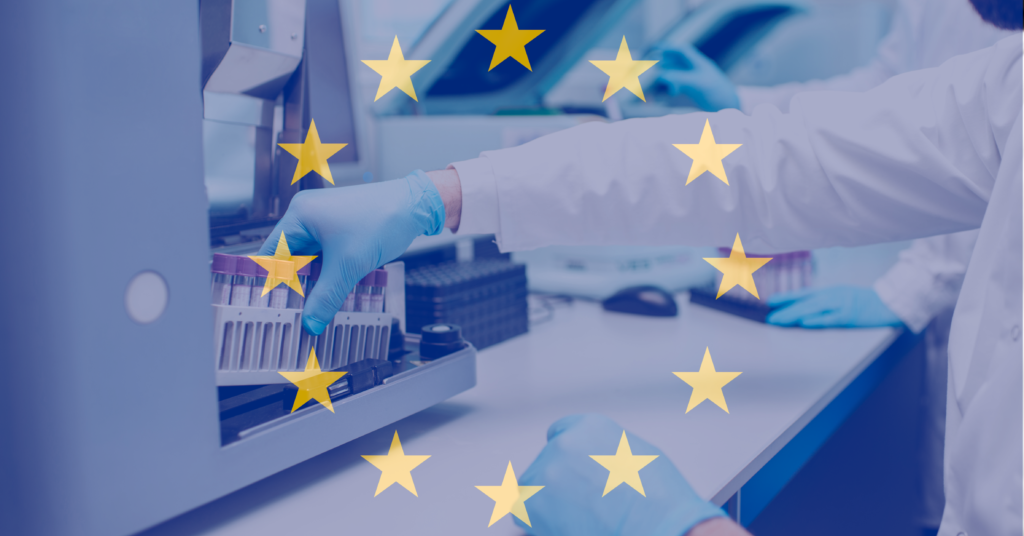5 Tips to Get Ready for the New EU In-Vitro Diagnostic Device Regulation

Posted by:
Pit Muggli
Published on:
Jul 18, 2019
By end of 1998, the first European quality and safety requirements for in vitro diagnostic medical devices, the European Directive 98/79/EC (IVDD), stepped into effect. After almost 20 years in May 2017 the new European Regulation (EU) 2017/746 (IVDR) was published to repeal the IVDD, and set a universal quality standard to better accommodate emerging medical technologies.
However, the to-do list to ensure that new and already registered IVD products comply with the regulations seems long and complicated for many in vitro diagnostic device manufacturers. Further, the implementation schedule is non-compromising.
But not to worry. We’ve gathered together a step-by-step guide for you to implement the new EU regulations in an organized, rudimentary and risk-free pivot.
1. Know the transition schedule
The strict implementation schedule puts pressure on Notified Bodies, authorities and manufacturers. As falling behind deadlines poses the risk to lose company authority and business, keeping track of when changes need to be achieved is critical. It's also essential to know until when and under which conditions the IVD products can be placed and /or made available on the market.
The most important dates in the IVD regulation transition period for products that are not subject to certification by a Notified Body are shown below:

Timelines for IVDD and IVDR medical devices
Based on the associated or assumed risk class of your products and the status of the related R&D -projects, your regulatory road-map should be defined to determine which approach fits best with your marketing plans and the existing and new requirements of the applicable directive (IVDD) or regulation (IVDR).
2. Define your scope and context
An important part of the regulatory strategy is to consider and understand the scope of activities that apply only to your operations. Consider the following topics:
a) What is the defined or planned intended use of your device?
b) Is your company located inside or outside of the EU?
c) Do you need a Notified Body to assess the conformity of your device?
d) What are your sales and distribution channels?
Answering these metrics will ensure that you focus on the appropriate regulatory changes for your organization.
3. Check your Indented Use -statement carefully
The effort required for the upcoming processes and documentation depend on the risk class and intended use of your device. The IVD device -based on the associated risk categorizes products into List A, List B and “other devices”, whereas the IVD regulations define four risk classes from A (low-risk) to D (high risk).
The same intended use of a device may therefore lead to different classifications under IVDD or IVDR. As a result, devices that are marketed based on the manufacturers self-declaration might require a Notified Body for conformity assessment, adding time, cost and effort to your projects.
4. Update your internal quality management system
The new EU IVD regulation enhances manufacturer's quality management system (QMS) requirements to cover all relevant aspects to quality of processes, procedures and devices. Depending on the risk class of the device, the QMS may be subject to regular, unannounced or for-cause audits by a Notified Body, and the more prepared you are for a surprise audit, the better.
Under the new regulation, manufacturers are required to assign a person to be responsible for regulatory compliance, with the requisite expertise in the field of in vitro diagnostic medical devices and fulfilling minimum conditions of qualification.
5. Avoid unnecessary bureaucracy
Given that regulatory requirements have increased by the new regulation, to choose the most efficient and effective way to address and implement these is a key factor for your company’s success.
A good start is to carefully analyze your current set-up, projects and plans, and then move on to develop a stringent regulatory road-map. If you focus on required compliance and apply the least burdensome implementation approach, you'll be on a secure path towards a rapid turnover of your devices for the European market.
If you are interested in a detailed EU IVDR implementation checklist, click download below:
This post does not substitute for following the official guidelines provided by the European Union.

